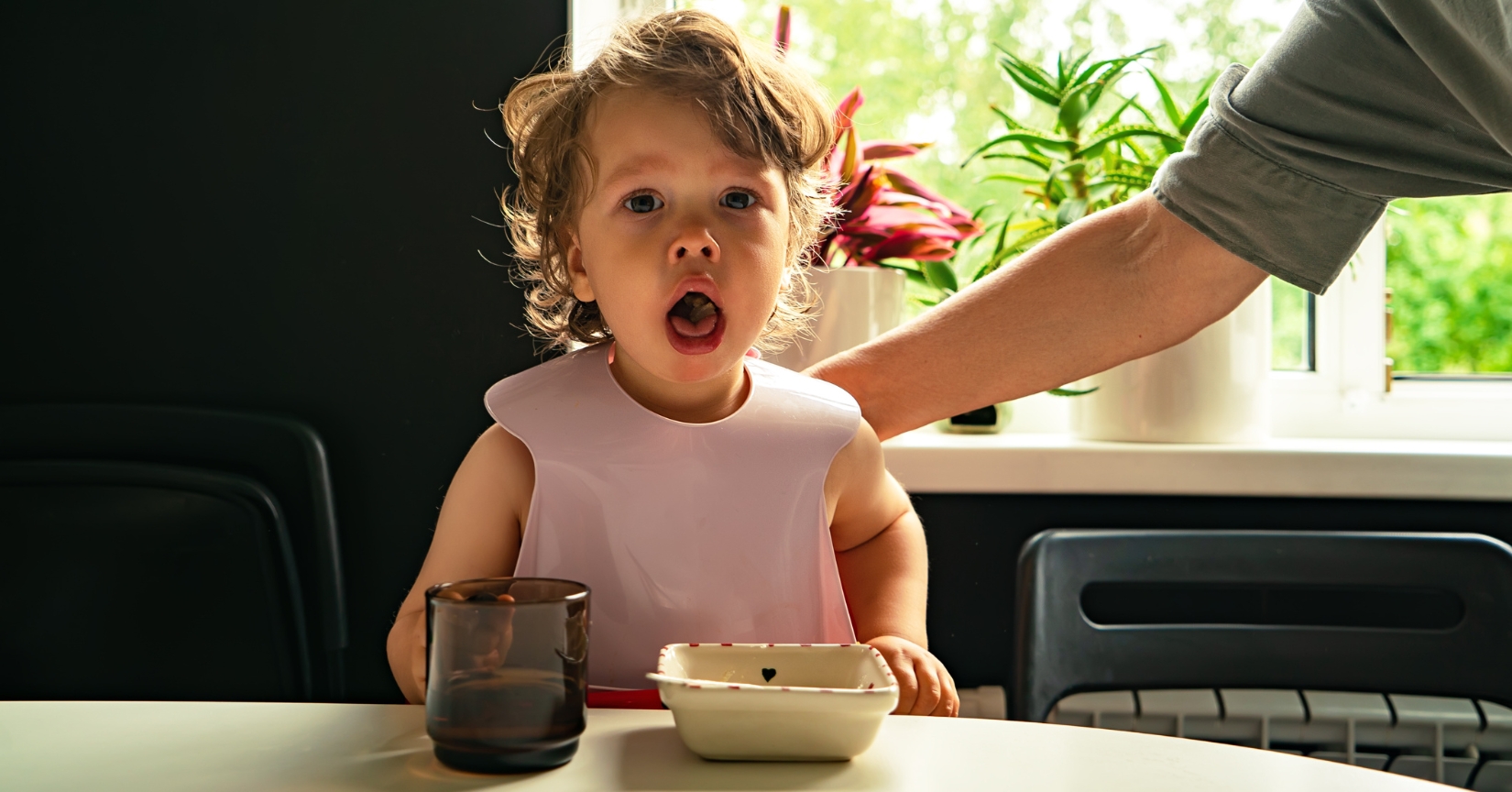Every parent knows the fear, the heart-pounding dread that grips you when your toddler picks up a small object, their innocent eyes wide with curiosity. You’re across the room, but it might as well be miles. The next few moments can seem an eternity as you rush to prevent a potential disaster.
You’re not alone in this fear. It’s a universal experience shared by parents everywhere, yet not all choking hazards are as obvious as others.
How do you know what items pose a threat? What are the hidden dangers lurking in your child’s environment that could potentially turn into a choking hazard?
Through years of research and countless conversations with pediatricians, child safety experts, and fellow parents, we’ve compiled a list of 6 top choking hazards for toddlers that every parent should be aware of. Remember, knowledge is power in preventing these frightening incidents.
1. Small toys and parts
All parents know the joy of seeing their child’s face light up when they’re presented with a new toy. But this happiness can quickly turn into a nightmare if the toy or its parts are small enough to fit into a toddler’s mouth.
Some toys come with parts that can be detached or broken off, becoming potential choking hazards. Your child might not comprehend the danger of these small pieces, as their instinct is to explore with their mouth.
Always make sure to check the age recommendation on the toy’s packaging. Manufacturers include this information for a reason, and it’s not just about intellectual capability but physical safety too. If you have older children, ensure that their toys with small parts are kept out of reach of your toddler. It might be a good idea to have a separate play area for them.
2. Some types of food
Who would’ve thought that something as essential and life-giving as food could pose a choking risk to toddlers? But the reality is that certain types of food present more of a hazard than you might initially believe.
Think of round, hard, or slippery foods – grapes, hot dogs, hard candy, or even chunks of cheese. These seemingly harmless food items can easily get lodged in a child’s tiny throat if not properly prepared.
The counterintuitive part here is to cut foods into very small pieces, even those you wouldn’t typically expect to be a problem. Grapes should be quartered, hot dogs sliced lengthwise before being cut into small pieces, and hard candy should be avoided altogether.
It’s all about changing our perspective and understanding that what’s safe for adults isn’t always safe for our little ones. An extra moment taken in preparation can be the difference between a normal mealtime and a race to the emergency room.
3. Balloons
Balloons can bring a sense of joy and wonder to a toddler’s eyes. Their vibrant colors, the way they float in the air, it’s all so magical and captivating. Unfortunately, this innocent fascination can quickly turn into a serious hazard.
Deflated or popped balloons are incredibly dangerous for toddlers. Children can easily inhale them while trying to inflate the balloon or accidentally swallow them when putting them in their mouths, which is a common behavior for toddlers exploring their environment.
It’s not just latex balloons either. Foil or “mylar” balloons also pose a threat if they pop and create small, ingestible pieces.
The key here is adult supervision. Keep a close eye on your child whenever there are balloons around and ensure any burst balloons are immediately disposed of properly, far out of reach from those tiny, curious hands.
4. Peanut butter and marshmallows
You might not believe it, but some of our pantry staples can be a cause of concern when it comes to toddler safety. Two prime examples are peanut butter and marshmallows.
Have you ever noticed how peanut butter sticks to the roof of your mouth? Now imagine that happening in a toddler’s smaller mouth. The thick, sticky consistency of peanut butter can make it difficult for a toddler to swallow, leading to a choking hazard. The same goes for marshmallows with their squishy yet potentially obstructive texture.
An interesting fact to note is that honey, another pantry staple, is not recommended for children under the age of one due to the risk of botulism, but it also poses a choking hazard due to its viscous nature.
The trick here is serving these items in small quantities or mixing them with something easier to swallow. For instance, spread a thin layer of peanut butter on a slice of apple or bread instead of offering it in a spoonful. Little tweaks can make all the difference in safe snacking for your little one.
5. Coins and small objects
It’s a scene that’s all too familiar to many parents: you turn your back for just a moment, and your toddler has found something small and shiny on the floor. Before you know it, they’ve put it in their mouth.
Coins, buttons, and small pieces of jewelry – these are items we routinely handle and occasionally drop without a second thought. But to a toddler, they are fascinating discoveries. The problem is, these small objects can easily become lodged in a child’s throat.
As parents, it’s our duty to ensure our homes are as safe as possible for our children. But let’s be honest, it’s impossible to have eyes on them every second of the day. We can’t prevent every stumble or scrape. And sometimes, despite our best efforts, accidents happen.
So what can we do? Regularly check the areas where your child plays for any small objects that may have fallen. Keep your purses, bags, and pockets free of small items when around toddlers. And most importantly, learn the basics of infant and toddler CPR – because in those heart-stopping moments, every second counts.
6. Magnets
In a world brimming with technology and innovation, even something as seemingly innocent as magnets can pose a hidden threat to our little ones.
Small, powerful magnets, often found in toys or fridge magnets, can be easily swallowed by a curious toddler. If more than one magnet is swallowed, they can attract each other through the walls of the stomach or intestines, causing significant damage.
The danger doesn’t lie only in small magnets either. Larger ones can also be a choking hazard due to their size and shape.
To keep your child safe, ensure that any toys with magnets are age-appropriate and devoid of small parts. Regularly inspect fridge magnets or any other household items with magnets to ensure they’re secure and out of reach.
It’s easy to overlook everyday objects when considering potential hazards. Staying informed and alert is the best way to protect your curious little explorer.
Understanding the why and how of toddler safety
You may be wondering how toddlers, so small and innocent, always seem to find their way into potentially hazardous situations. The answer lies in understanding their developmental stage.
Toddlers are naturally curious. They’re discovering their environment and learning about the world around them. Unfortunately, their primary method of exploration is through their mouths. It’s a phase called oral sensory development, and it’s a critical part of their growth.
It’s a stage where they learn about textures, shapes, sizes, and tastes. This hands-on (or rather, mouths-on) exploration helps them understand the world around them. It’s a natural and necessary part of their development. But this curiosity combined with their inability to understand danger makes them prone to choking hazards.
As parents and caregivers, it’s our responsibility to create a safe environment for this exploration. Regularly inspecting their play areas, keeping small objects out of reach, and being vigilant about the kinds of foods they eat are just some ways we can ensure their safety.
But let’s not forget about the importance of teaching our children about safety too. As they grow older, we can start educating them about what is safe to put in their mouths and what isn’t. This kind of early learning can go a long way in keeping them safe not just at home but wherever they go.
Choking is a terrifying thought for any parent or caregiver. But with knowledge, vigilance, and a proactive approach to safety, we can significantly reduce the risk and ensure our toddlers can explore their world safely.
Remember, though: even with all the precautions in the world, accidents can still happen. That’s why it’s essential for every parent and caregiver to know basic first aid for choking. Knowing what to do in those critical moments can make all the difference.
In essence, keeping our toddlers safe from choking hazards is a multifaceted task. It involves childproofing our homes, being mindful of the toys and foods we provide, educating our children, and equipping ourselves with the knowledge to handle emergencies. It’s a big responsibility, but there’s nothing more important than the safety and well-being of our little ones. That’s what makes all this effort worth it.








